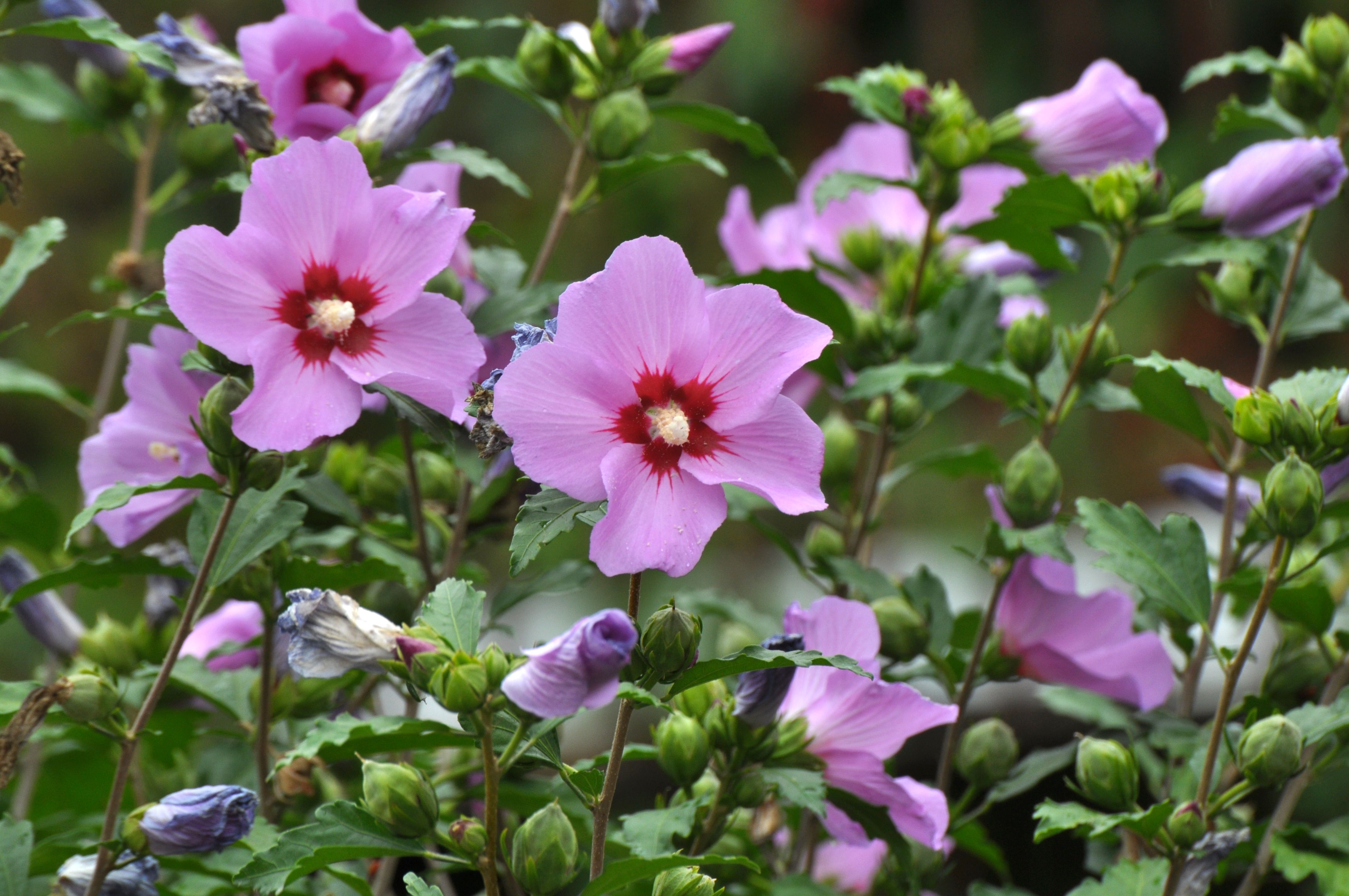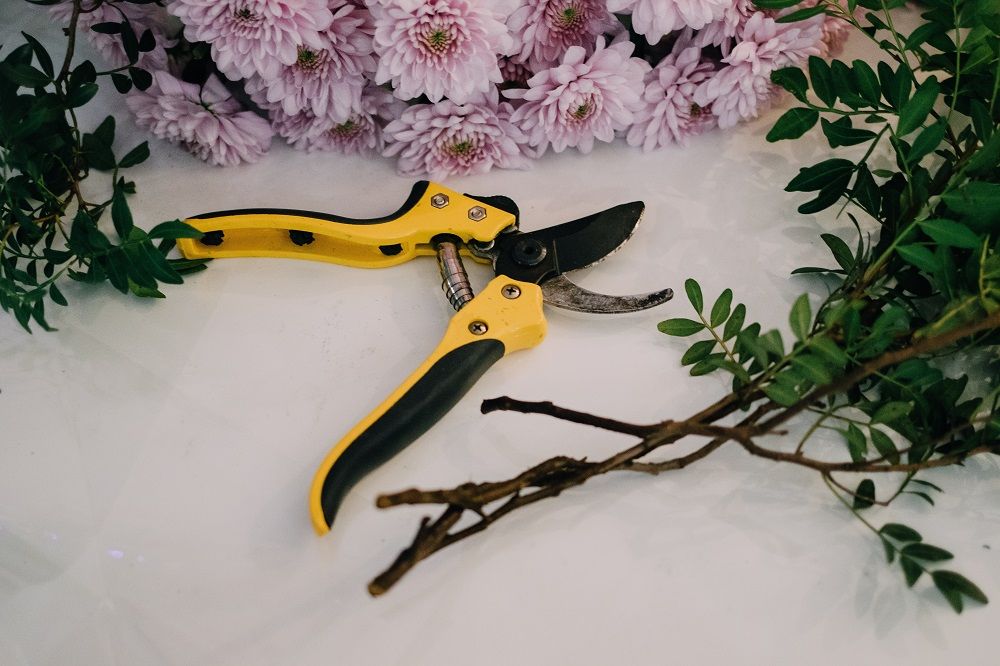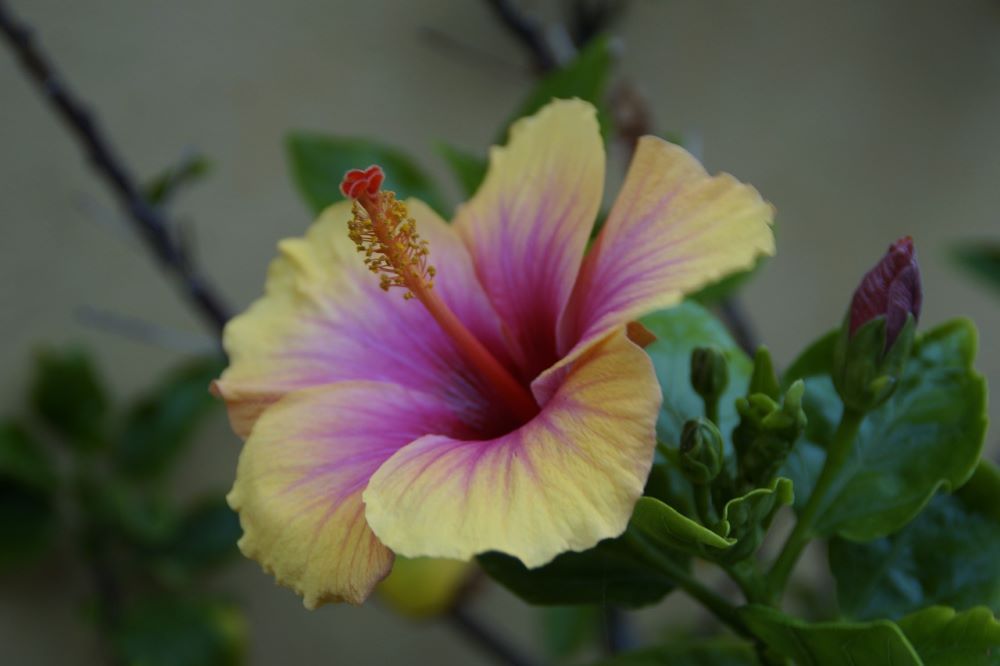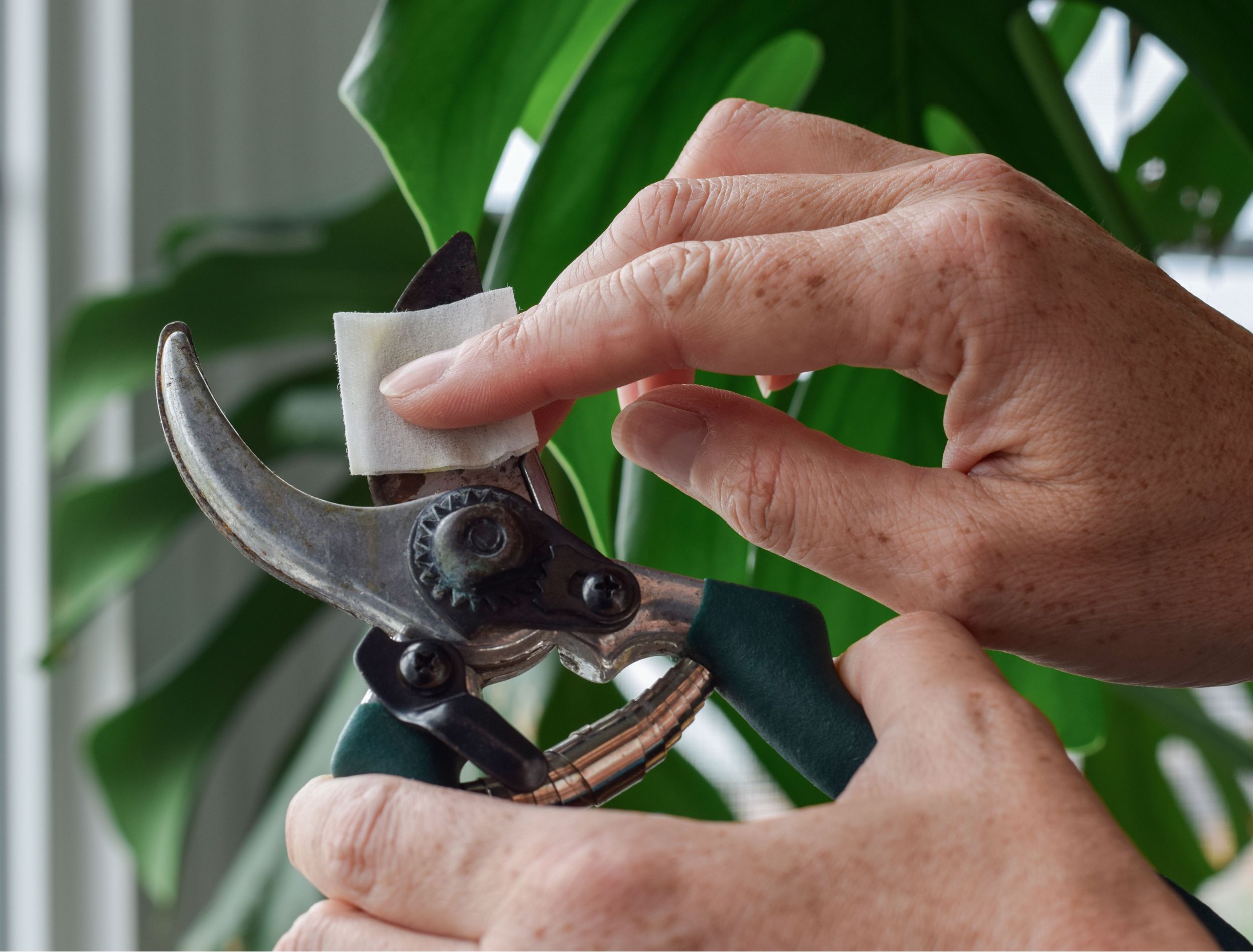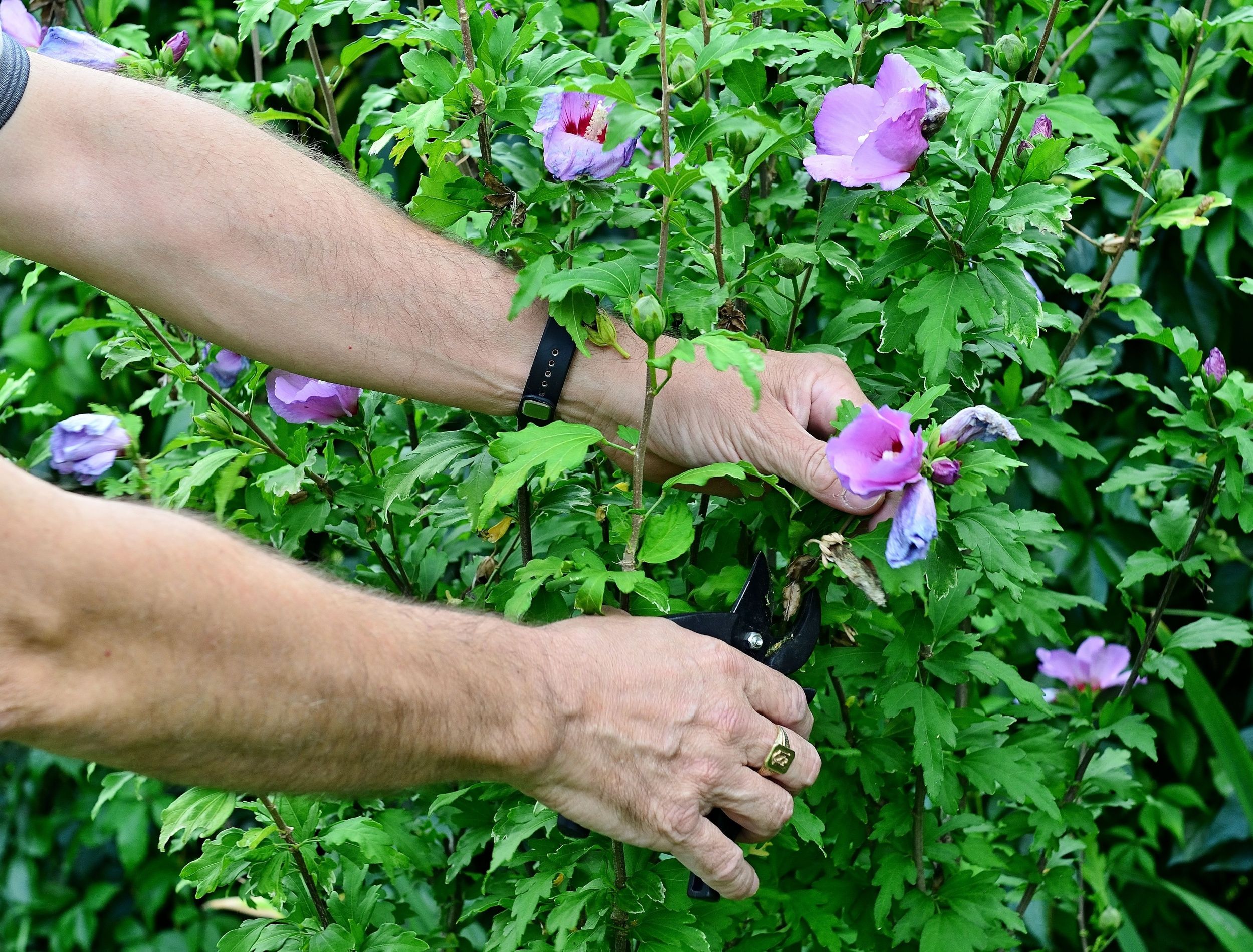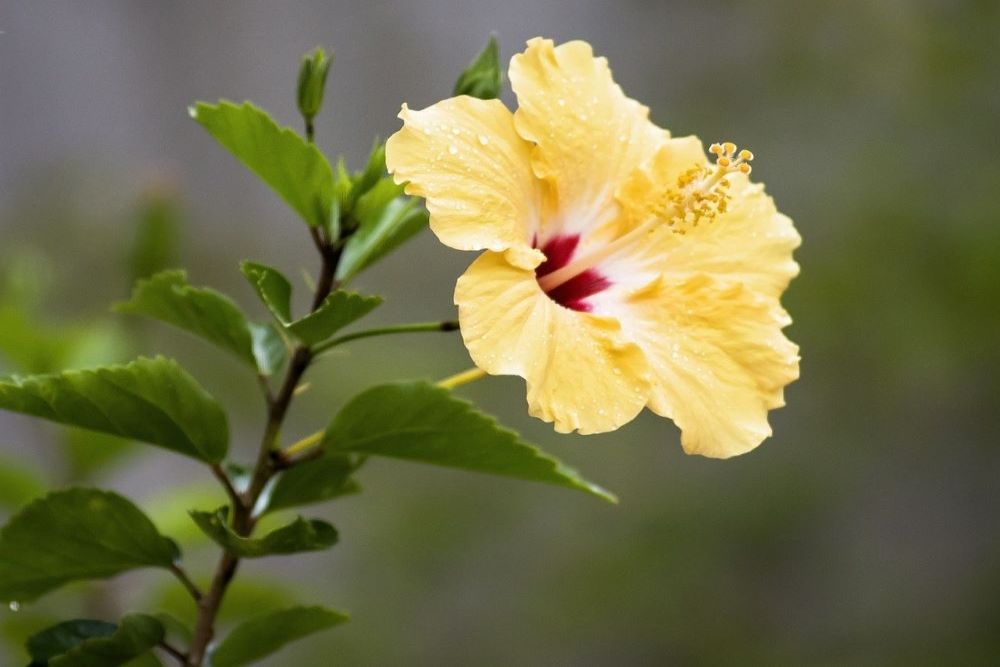Hibiscus plants bring color and life to backyards and indoor spaces with their large, showy blooms and tropical beauty. With over 200 varieties of hibiscus to choose, there's likely one that'll look great in your home! Hibiscus plants come in both annual and perennial varieties with flowers in shades of blue, pink, red, white, purple, and even multiple colors. Some varieties —like the hardy 'Rose Mallow' — have blooms the size of dinner plates that can reach up to 12 inches in diameter!
In order to keep the signature flowers of your hibiscus plant blooming, pruning is important. Discover how to properly prune your hibiscus, so you can enjoy its tropical blooms all season long!
Materials You'll Need
Get the right tools
You don't need complicated tools or equipment to prune hibiscus. Some basic garden staples will quickly get the job done.
- A clean, sharp pair of garden pruners.
- A mature hibiscus plant.
- Some gardening gloves to protect your hands from sharp branch tips while pruning.
Why Does Hibiscus Need Pruning?
A heathy, thriving plant
Hibiscus plants are known for their showstopping flowers. Pruning the plant has a variety of benefits that vary based on when you do the pruning, and what you're cutting away.
|
When Are You Pruning? |
What You're Removing |
Benefits to Your Hibiscus Plant |
|---|---|---|
|
Winter or early spring |
Last year's old growth |
Encourages your plant to produce new growth that will create fresh blossoms this growing season. |
|
After a bloom fades and dies |
The spent bloom |
Removing spent blooms encourages your plant to produce new ones! It also cleans up the appearance of your plant. |
|
Anytime |
Diseased, broken, or dead branches |
Removing diseased, broken, and dead branches cleans up your plant, freeing up space for new branches to grow. It also enhances the health of your plant. |
How to Properly Prune Your Hibiscus
Make the proper cut
Pruning your hibiscus is a quick process that will enhance the health of your plant, tame unruly branches, and encourage the growth of new branches and beautiful blooms.
Step One: Clean and Sharpen Your Tools
Cleaning your pruning shears prevents disease from traveling from plant to plant, and it also keeps the tools in good shape, eliminating rust and dirt, so you pruners function year after year.
- Remove visible dirt by rinsing your pruners. Soak them in water for 15 minutes, then give them a good scrub.
- Disinfect by soaking them for 10 minutes in a 9:1 water bleach solution or a 50:50 water and vinegar solution.
- Remove rust by using sandpaper, a metal brush, or steel wool. Baking soda and vinegar can help loosen stubborn rust spots. Rinse and dry the pruners after removing the rust.
It's also important to keep your pruners sharp. Keeping the pruners sharp allows you to cut through branches easier, and prevents damage to your plant. Dull pruners can pinch the branch instead of sliding right through and this pinching action damages the cells of the plant.
- Rub vegetable oil, penetrating oil, or mineral oil over the blade of your pruners.
- Sharpen the blade using a small file or sharpening stone. Run the cutting edge of the blade along the edge of your file following the direction of the blade's bevel.
Step: Two: Choose the Right Time to Prune Hibiscus
|
In the winter or early spring |
Prune away old growth to allow for new growth, sculpt the shape of your hibiscus, and encourage new flowers to grow. |
|
Mid to late summer |
Deadhead spent blooms to clean up the appearance of your plant and promote new blooms. |
|
As needed |
Remove dead, broken, or diseased branches. |
According to The Farmer's Almanac, hibiscus plants bloom on new wood. For perennial hibiscus, this means that all of last year's growth can be cut to the ground as soon as winter arrives, or in the following spring. Nothing is going to grow there this year and removing it encourages new growth. Annual hibiscus can also be pruned in the spring to encourage bushier growth, direct branches away from the main stem, and encourage new flowers. Pruning annual hibiscus in the spring allows you to see where the flower buds are, so you don't accidentally remove them.
Deadheading hibiscus to remove spent blooms is best done as soon as you see a bloom fade. The flowering period of hibiscus ranges based on species, but most hibiscus flower in mid to late summer. During this period you will likely be deadheading spent blooms every day.
Removing broken, damaged, or diseased hibiscus limbs should be done as soon as you see them appear. Pruning away these problem branches can happen at any point during the growing season of your hibiscus plant.
Step Three: Prune Your Hibiscus
Now that you have clean, sharp pruners, and you know the best time to cut, it's time to prune your hibiscus. In the winter or early spring, locate the old, dead branches of your hibiscus plant. Using sharp pruners, cut the old growth right along the base of the soil.
Pruning away the old growth will signal to your plant that it's time to begin growing this year's branches, which will produce the buds and flowers of your hibiscus.
In mid to late summer, as soon as a bloom has wilted, faded, or died, it can be removed.
- Use your pruners to make a diagonal cut at the base of the flower stem where it joins up with the main branches of the plant.
- You want your pruning cut to be facing away from the center of the plant to encourage outward growth. This allows for more air and sunlight to reach all parts of your plant, reducing the chance of disease, and encouraging new blooms.
- If you can, make your cut above a leaf node to allow the plant to produce new leaves and growth. Leaf nodes are tiny bumps on the surface of the branch which will form new leaves.
If removing every flower as it fades seems too labor-intensive there's another option. After the first flush of blooms has finished, you can remove the top third of the hibiscus's branches. This signals the plant to produce new growth which will have fresh new blooms.
Bring On Hibiscus Blooms!
HIbiscus plants are known for their massive tropical blooms that bring color and joy wherever they're planted. With some careful pruning in the winter, early spring, and throughout the bloom period you can enjoy the showstopping flowers of your hibiscus plant for years to come.
Do you or someone you know have a hibiscus plant? Share this article with all your friends and family, so they can learn how to properly prune their hibiscus!

